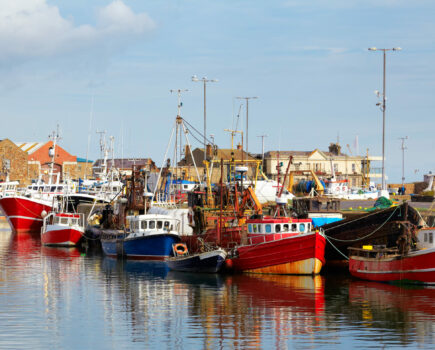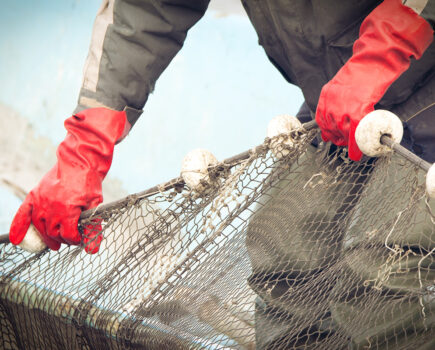But ‘choke’ worries as saithe transferred to Norway.
Fishermen will have increased quotas in 2018 for five of the six North Sea stocks jointly managed by the EU and Norway, reports Tim Oliver.
This was the outcome of the annual EU/Norway negotiations in Bergen, that concluded on 1 December.
Quota increases include 38% for whiting, 25% for herring, 24% for haddock and 10% for cod. Cod, haddock, saithe and herring will also be fished at MSY levels in 2018, and whiting and plaice are expected to be at MSY by the target date of 2020.
The increases were helped by top-up quotas for the species subject to the landing obligation in 2018, and there were also significant inward transfers of quota from Norway in the deal. These included 800t of whiting and additional haddock, ‘Norway Others’ and Norwegian monkfish.
One element of the package that could cause problems next year was the transfer to Norway of both North Sea and west of Scotland saithe quota, as saithe is included in the landing obligation, and could become a choke species if quota runs out.
Both DEFRA and Marine Scotland ministers welcomed the overall package, although Scottish Minister Fergus Ewing expressed reservations about the saithe transfer to Norway.
He said overall catch levels in 2018 were ‘very positive’, with increases in five of the six shared stocks, and welcomed the inward quota transfers from Norway. He also said the combined effect of a 38% increase in the whiting quota and 800t inward transfer from Norway meant that could now be ‘absolutely no rationale for the UK to top slice Scottish whiting quota for the sole benefit of English vessels, and I expect this to cease immediately’.
Fergus Ewing said he was ‘disappointed’ that the EU negotiators had continued to trade away saithe quota in both the North Sea and west of Scotland. “This is a significant choke risk stock for Scotland in the North Sea, and we remain firmly opposed in principle to giving away to Norway stocks that we remain short of ourselves. This makes no economic or fishing sense and risks putting the industry in a difficult position under the landing obligation.”
But DEFRA minister George Eustice said it was not possible to reduce the amount of saithe transferred to Norway, as Germany and France, the major shareholders, objected. But he welcomed the overall deal, saying it demonstrated the UK’s commitment to sustainable fishing, with four out of the six shared stocks with Norway now fished at MSY. Securing a better spread of North Sea stocks transferred to the UK from Norway was a ministerial priority, in order to support the implementation of the landing obligation.
“Increases in important North Sea stocks, such as whiting and anglerfish, also raise the overall value of this agreement to the UK, and will help the industry manage the requirements of the landing obligation,” said the UK minister.
“At December Council next week, we will seek to maintain progress towards getting more species fished sustainably.”
Northern blue whiting is another species dealt with at the EU/Norway talks, and DEFRA said George Eustice had been successful in his aim of keeping blue whiting at 110,000t, towards the lower end of historic fishing levels.
But Fergus Ewing complained that the EU was again being over-reliant on the use of northern blue whiting as a currency with which to bring in Arctic cod quota from Norway. He said: “Within the EU bloc, the UK is the largest shareholder of blue whiting, of which Scotland holds over 92%, yet receives not a single tonne of the Arctic cod coming back in return.”
Industry welcomes result
NFFO chief executive Barrie Deas said the talks had gone well, and the fact that stock trends were good had made the negotiations easier than can sometimes be the case.
The only surprise had been Norway’s unexpected and unscheduled presentation of its ideas on the relationship between the UK, Norway and the EU after Brexit (see below).
He told Fishing News: “There was agreement that the old EU/Norway management plans aren’t appropriate anymore, and we’re looking at new generation management plans. Norway put up some ideas, and they will be discussed next year. This meant that ICES MSY advice was used to decide the TACs, rather than the management plans.”
On the saithe transfers to Norway, he acknowledged that saithe was a potential choke species, but said there had to be some sacrifices to achieve the gains made overall. “If you want a package, you have to look at what Norway wants, as well as what it’s prepared to give.”
SFF chief executive Bertie Armstrong said they agreed with the Scottish minister’s comments on the EU/Norway talks. They achieved ‘a satisfactory outcome’ for the Scottish industry, reflecting the buoyant health of most stocks.
“There are mitigation measures for choking under the landing obligation, but, as always, there are some details to be attended to,” he said.
Read more news from Fishing News here.








